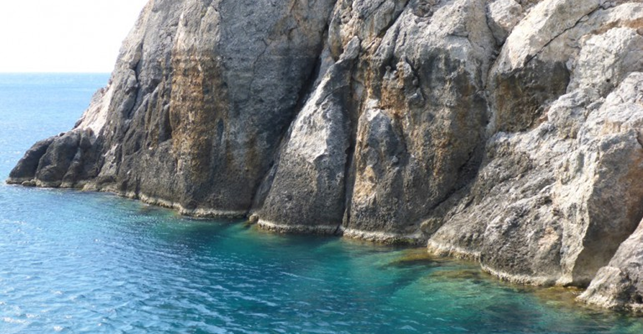In the Mediterranean, the most affected coasts, both for number of events and for intensity, are those of Greece and Italy.. From 1600 B.C. to the present day at least 290 tsunamis have occurred in the Mediterranean, some of them destructive.
In the Catalogue of Euro-Mediterranean Tsunamis (external link), published in 2014 and updated in 2019, historical tsunamis generated in the Mediterranean Sea and adjacent European seas from 6150 BC to the present day can be consulted (Maramai A., Graziani L., Brizuela B., 2019).
The most significant events have occurred in Greece. Around 1600 B.C., with the explosion of the volcano Santorini, in the Aegean Sea, the collapse of the caldera caused a devastating tsunami, with waves about 50 metres high, which spread throughout much of the eastern Mediterranean, also affecting Turkey, Syria, Egypt and Palestine which were devastated by the waves. According to some theories, this tsunami was the cause of the sudden end of the Minoan civilization in Crete.
Subsequently, in 365 A.D., a strong earthquake off Crete, of an estimated magnitude of 8 - 8.5, caused a sharp rise of the coastal platform, which in some places exceeded 10 metres. This earthquake generated a great tsunami which caused thousands of deaths and serious damage throughout the Mediterranean, destroying the port and the famous library of Alexandria in Egypt, and inflicting serious damage to the ports of the Middle East and all the way up the Adriatic Sea. In 1303 another strong earthquake off Crete produced a violent tsunami which caused many victims and serious damage in Crete, with very intense phenomena also in Israel and Egypt.
In addition to the well-known tsunami of Messina in 1908 (link to the sheet tsunamis in Italy), in 1956, a strong earthquake (magnitude 7.5) off the island of Amorgos (Aegean Sea) generated a tsunami with waves reaching 25 metres in Amorgos and 20 in Astypalaea, causing strong impacts in all the islands of the central-southern Aegean sea. The 1956 tsunami also reached Crete, with waves of about 2 metres.
More recently, in May 2003, a strong earthquake in front of the Algerian coast (Boumerdes) generated a tsunami which did not produce damage in the nearby coasts but spread as far as the French and Liguria coasts. The most significant damage was recorded in the Balearic Islands, where the waves caused heavy damage to many boats and floods in Mallorca and Ibiza. In recent years, several earthquakes of magnitude between 6.5 and 7 have generated small tsunamis in the Mediterranean. The most insidious is the one which occurred in 2017 near the island of Kos (Greece) and Bodrum (Turkey) where run-ups (the topographic height which the sea reached) up to almost 2 metres were recorded.
On October 30, 2020 (external link in italian), a 7-magnitude earthquake located north of Samos Island in Greece generated a tsunami that hit the Dodecanese islands and Turkey, particularly affecting Izmir (Izmir) province. The tsunami reached runups greater than 1.5m and, locally, peaks close to 2m in height were recorded. Widespread damages were recorded in Izmir province where the withdrawal of the sea followed by the tsunami was observed and the rush of the waters caused one victim. Damages also on the Greek islands coasts in particular to Samos, between the localities of Vathy, Kokkari, Karlovasi and the north coast of the island.




